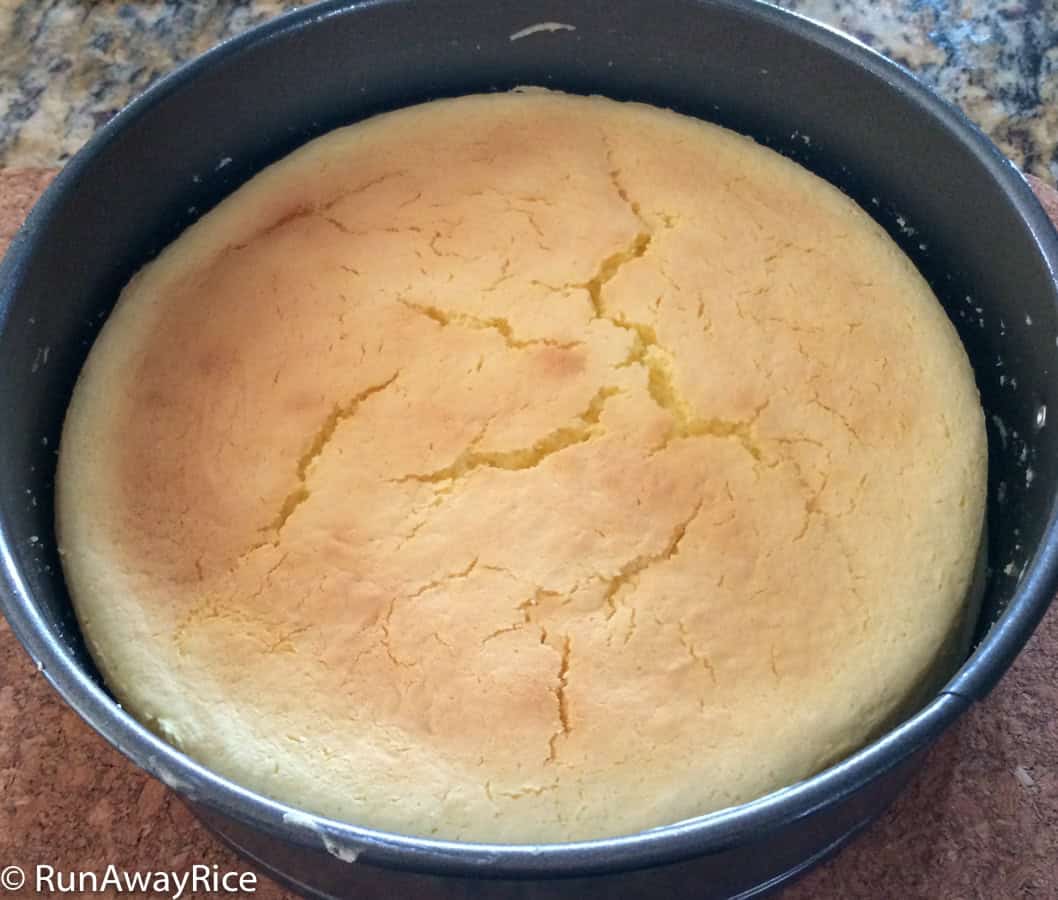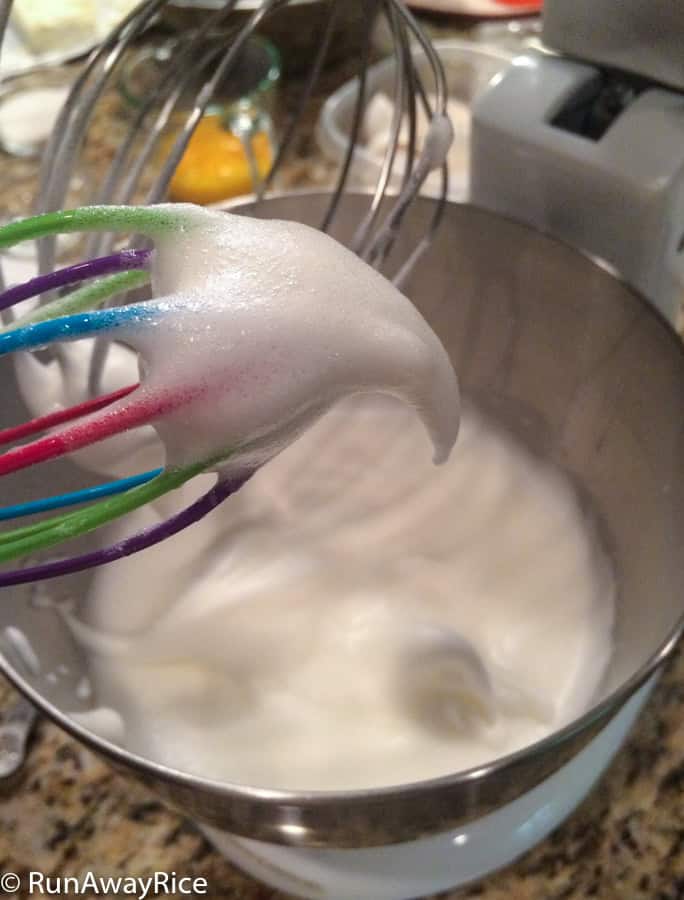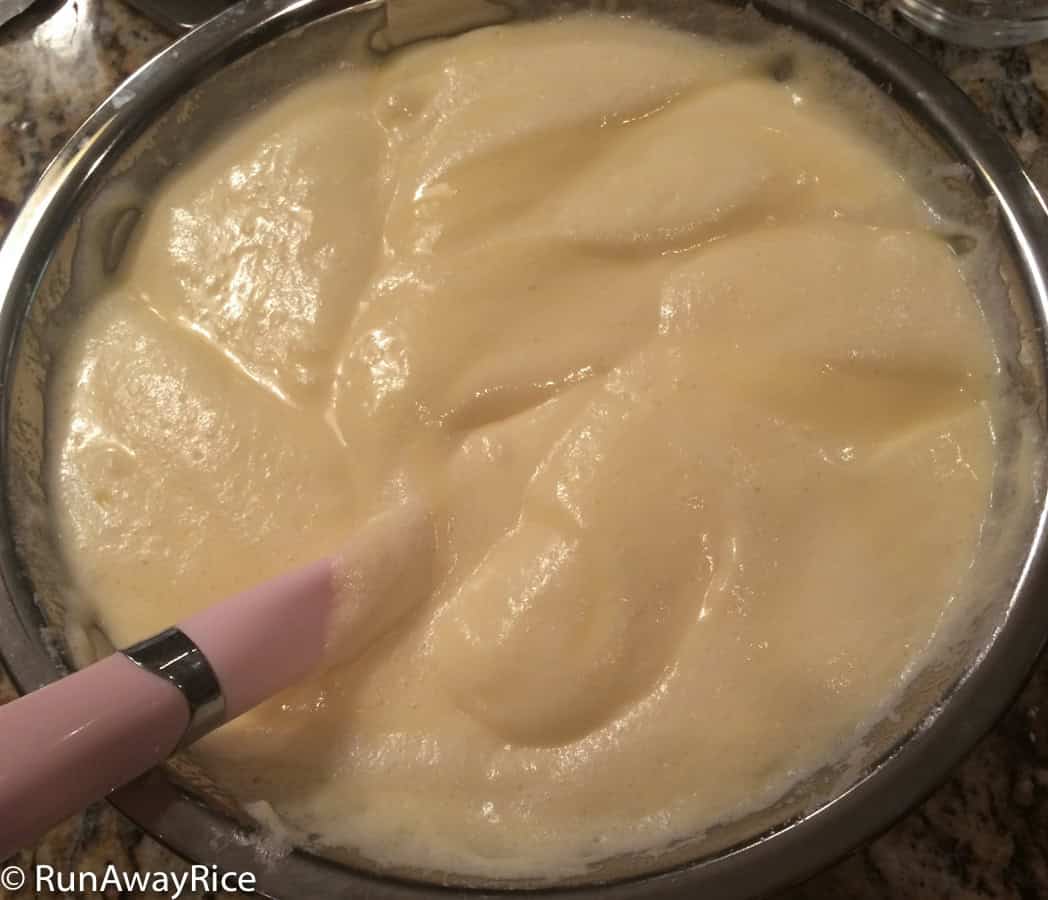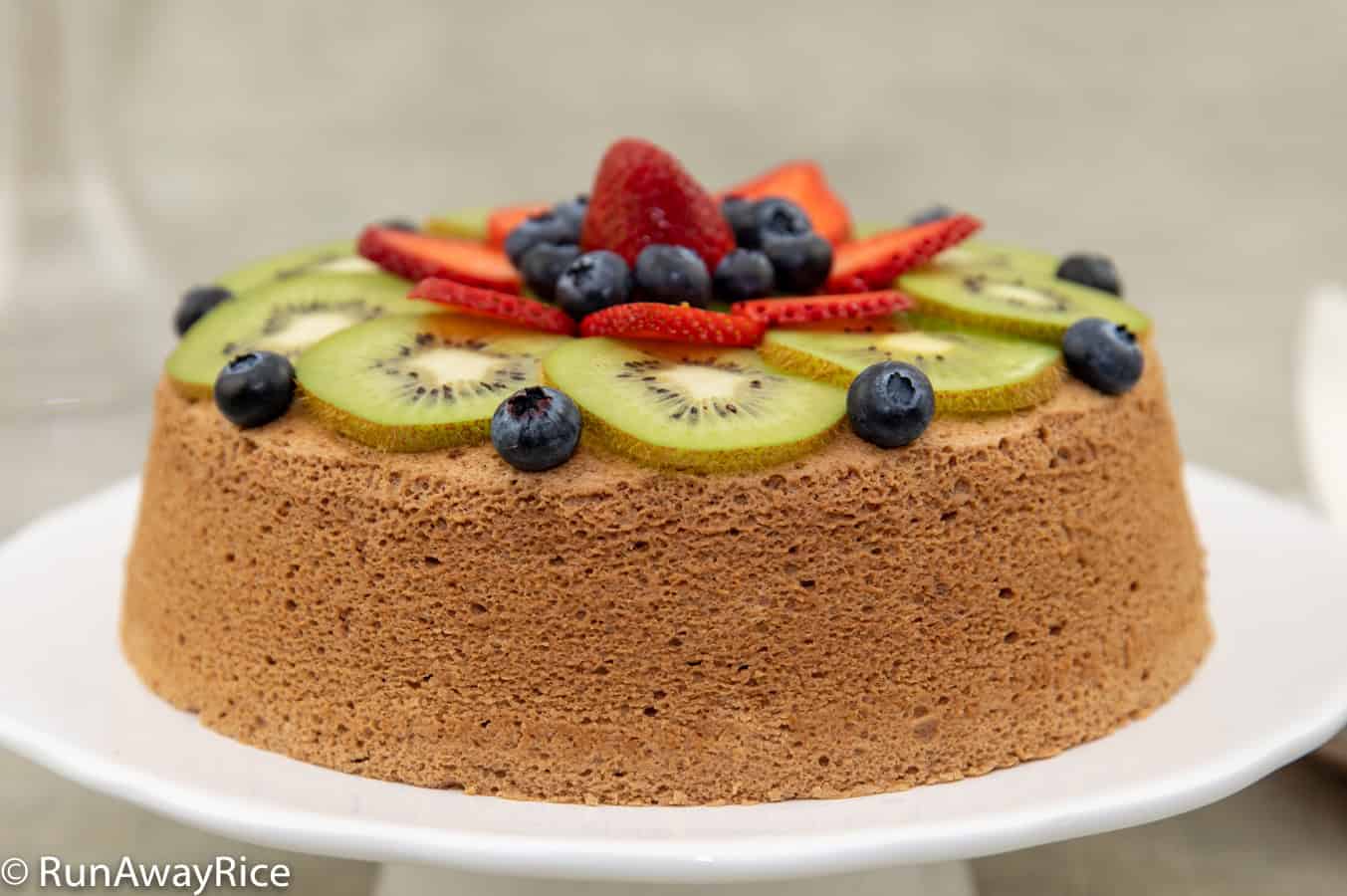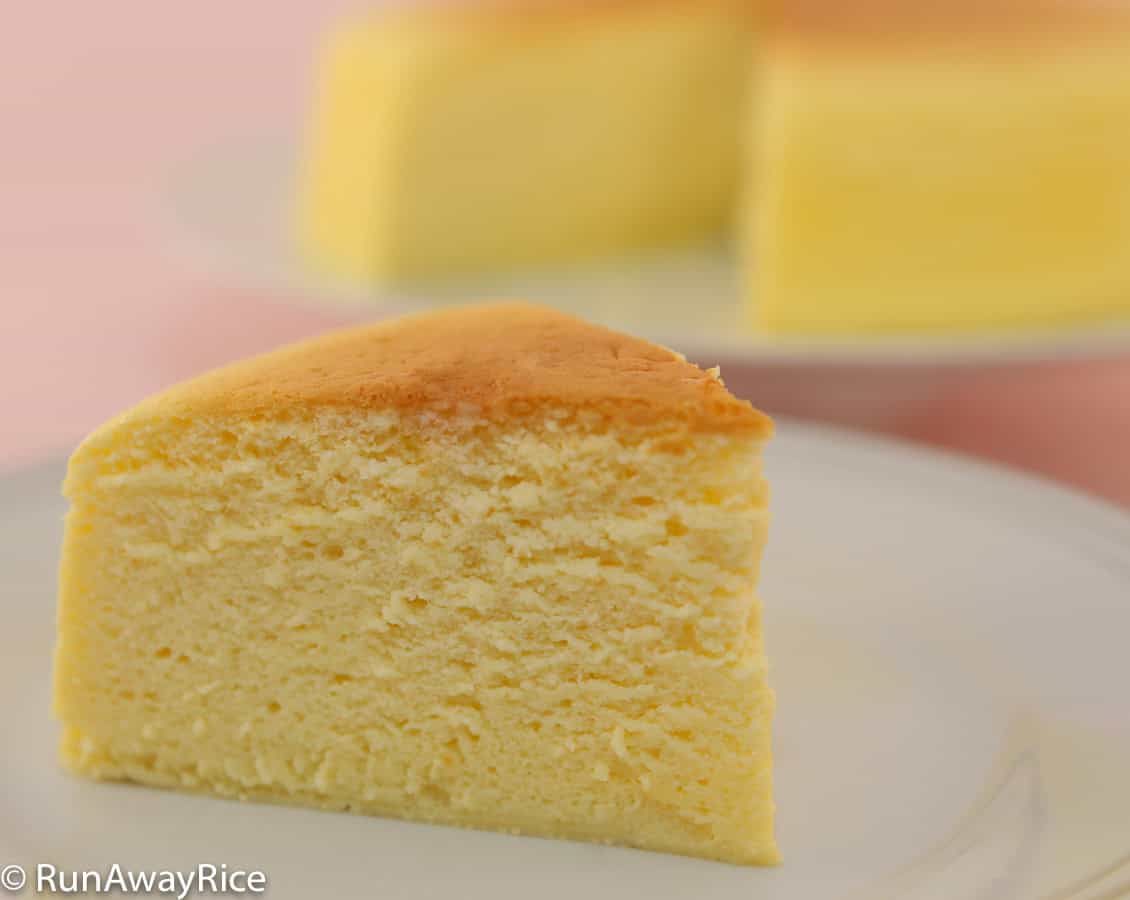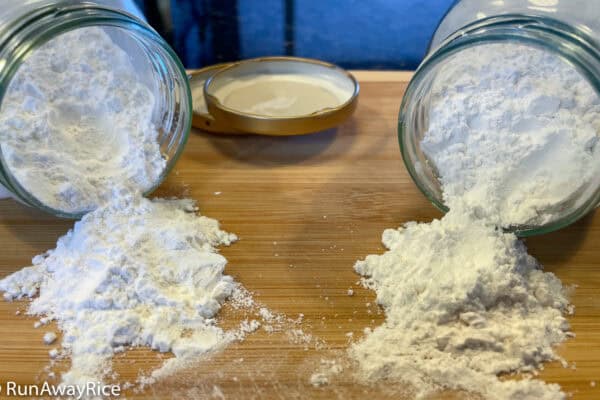I’ve made Cotton Cheesecake / Japanese Cheesecake more than 100 times, and I’ll be the first to admit: I’ve had my share of disasters. From sad sunken cakes to cracked tops and soggy bottoms, I’ve seen it all. But through trial, error, and lots of practice, I’ve learned how to prevent the most common mistakes. If your cheesecake isn’t turning out picture-perfect, you’re in the right place. I’ll walk you through what goes wrong and how to fix it. And yes, I even have photos of my past failures to prove it!
When I first started making this cake, I was drawn to its delicate texture–that dreamy balance of light as a cloud yet rich and creamy. But, achieving that perfection wasn’t easy. Every small detail mattered: the way the eggs were whipped, the folding technique, the oven temperature and the water bath. At times it felt like the cake was testing my patience, teaching me to slow down and pay attention. Over the years, I’ve discovered that baking this Cotton Cheesecake / Japanese Cheesecake is just as much about precision as it is about persistence.
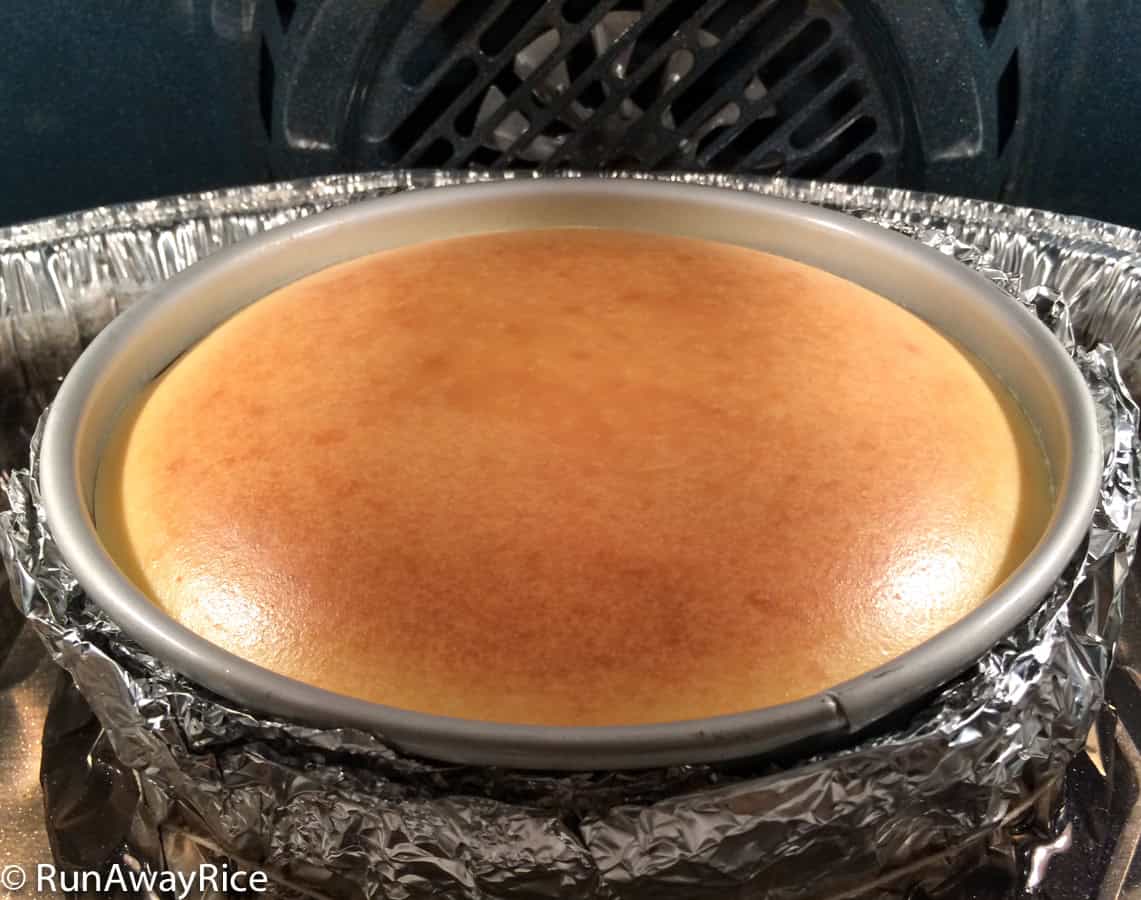 What I want to share with you here is not just a recipe but the knowledge I’ve gained through experience. I know how frustrating it feels when your cheesecake collapses or comes out looking nothing like the photos. That’s why this guide focuses on the three biggest challenges most bakers face: deflation, cracks, and water bath problems. My hope is that these tips will not only help you succeed but also give you the confidence to try again, knowing that each attempt brings you closer to cheesecake perfection.
What I want to share with you here is not just a recipe but the knowledge I’ve gained through experience. I know how frustrating it feels when your cheesecake collapses or comes out looking nothing like the photos. That’s why this guide focuses on the three biggest challenges most bakers face: deflation, cracks, and water bath problems. My hope is that these tips will not only help you succeed but also give you the confidence to try again, knowing that each attempt brings you closer to cheesecake perfection.
Why does my Cotton Cheesecake deflate after baking?
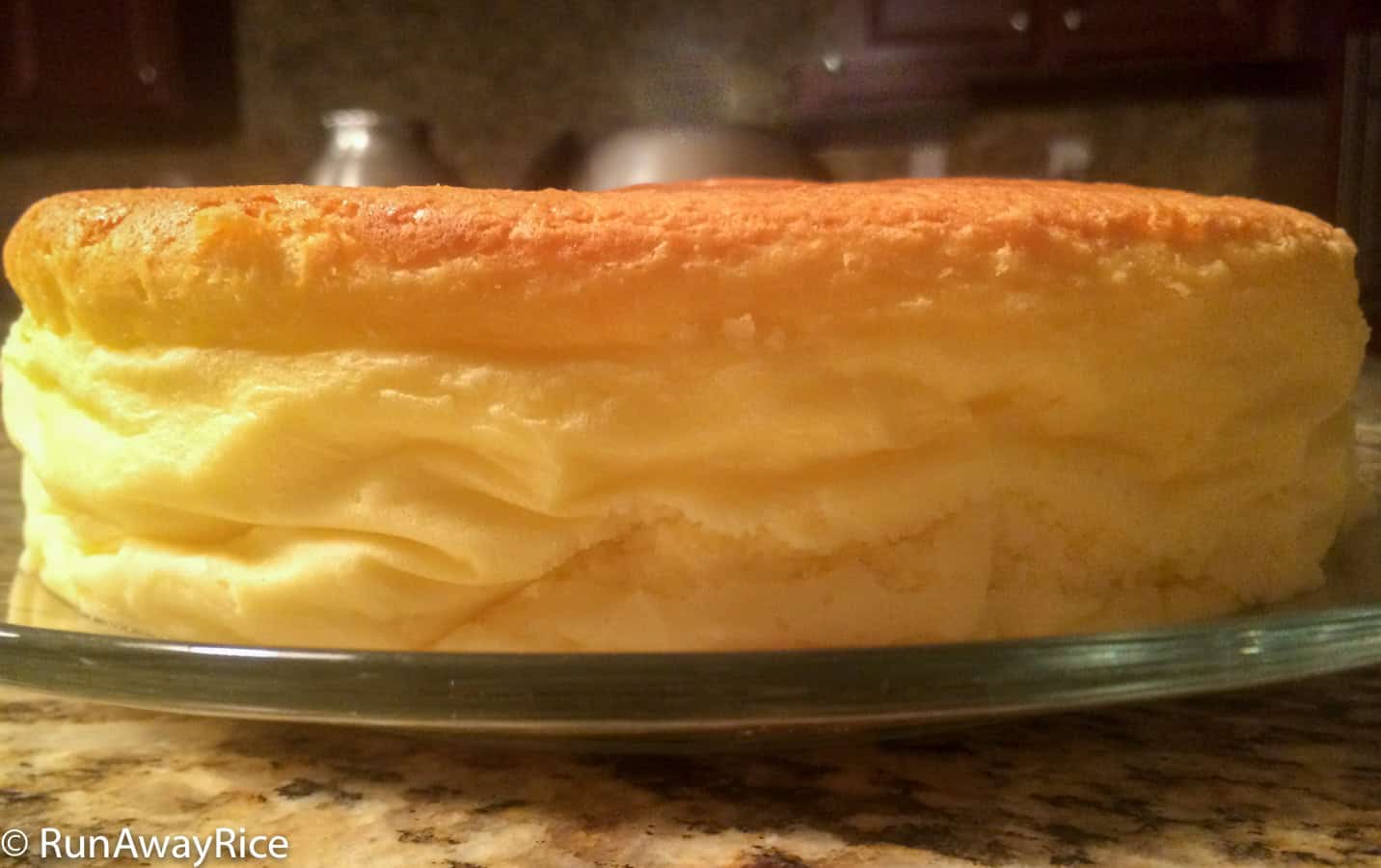 This is the #1 challenge readers write to me about. A cotton cheesecake is supposed to be fluffy and airy, but if it collapses after baking, it usually means the meringue (the whipped egg whites), wasn’t stable enough or it was over-mixed into the batter. The air bubbles that give the cake its lift pop during baking or cooling, leaving the cake dense and flat. To prevent this, whip your egg whites until they form soft peaks, not stiff peaks, and fold them in gently, keeping as much air as possible. Cooling the cake slowly also helps it maintain its structure.
This is the #1 challenge readers write to me about. A cotton cheesecake is supposed to be fluffy and airy, but if it collapses after baking, it usually means the meringue (the whipped egg whites), wasn’t stable enough or it was over-mixed into the batter. The air bubbles that give the cake its lift pop during baking or cooling, leaving the cake dense and flat. To prevent this, whip your egg whites until they form soft peaks, not stiff peaks, and fold them in gently, keeping as much air as possible. Cooling the cake slowly also helps it maintain its structure.
Let’s dive into each of the topics a bit further below: making the meringue, folding technique and cooling the cake.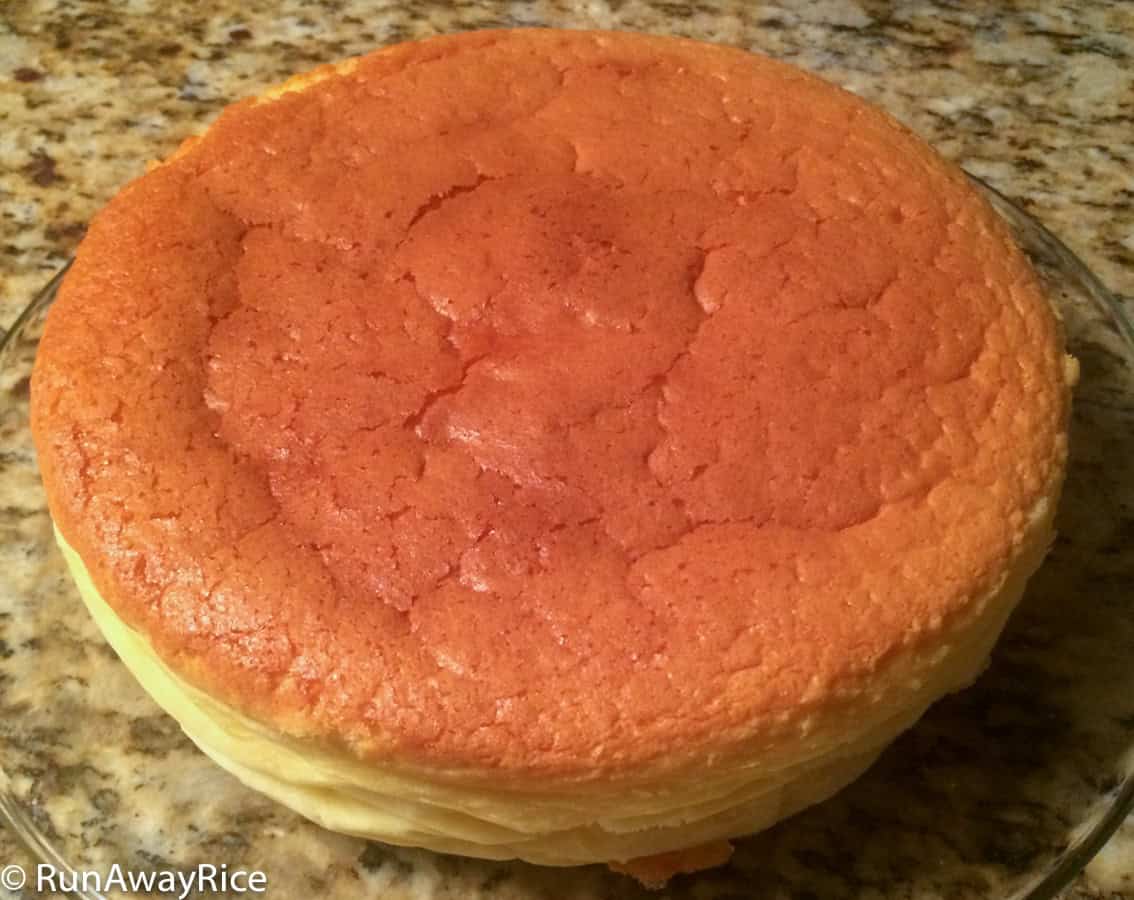
Making the Meringue to Prevent Deflation
When you whip egg whites, the texture of the peaks can tell you a lot about their readiness.
- Soft Peaks: When you lift the whisk or beaters, the peaks will form and then gently curl over at the tips. The mixture will still be smooth and will hold its shape, but it won’t stand up completely rigid. This stage is ideal for folding into batter because it helps maintain the airiness and light texture of the final cheesecake.
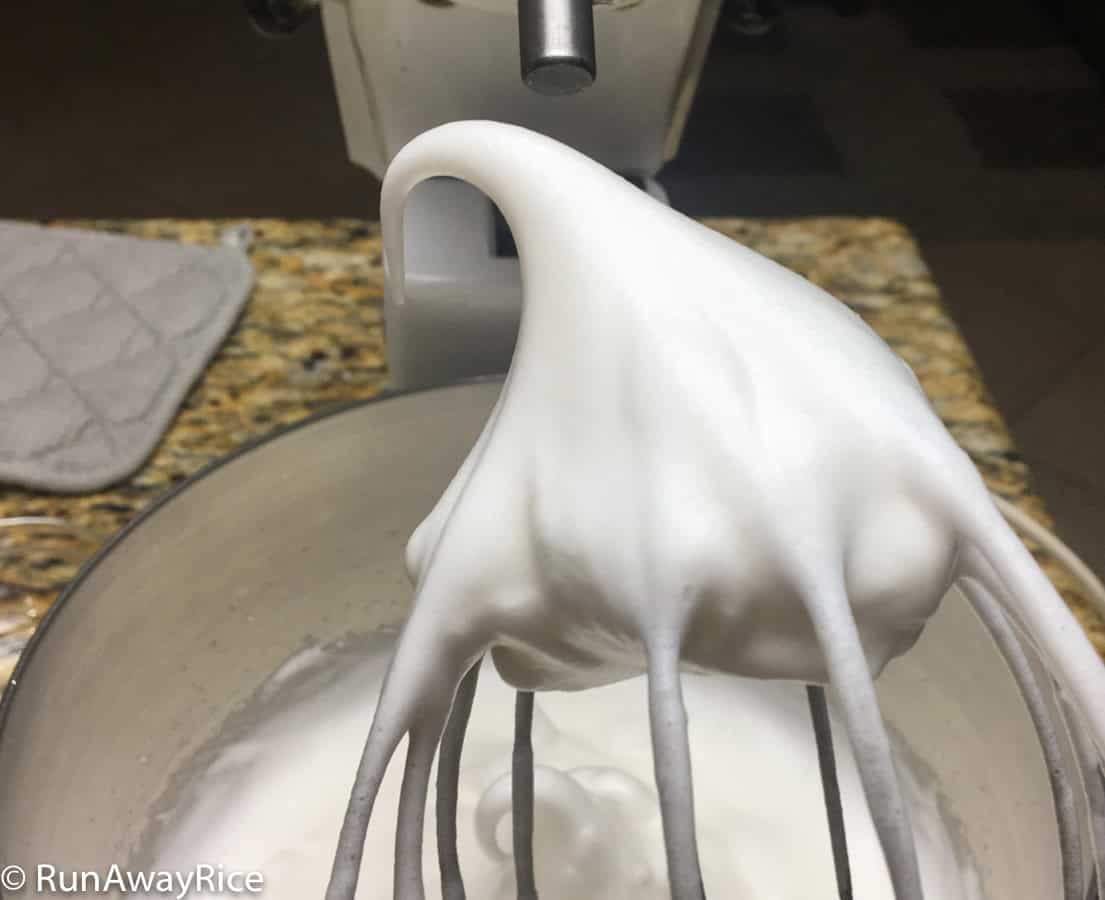
- Stiff Peaks: At this stage, when you lift the whisk, the peaks stand straight up and don’t bend at all. The mixture is firmer and more stable, but it can sometimes be too dense for delicate recipes like cotton cheesecake. Over-whipping can lead to a dense or dry texture.
Take a look at the photo and notice how the meringue peaks curl over on the whisk. This is what it means to whip the egg whites to the soft peaks stage. Once you get to this stage, you’re good to go. If you don’t have much experience making meringue, go slowly. Stop the mixer and check often as the difference between reaching soft peak and stiff peaks can be a matter of seconds.
The cream of tartar and sugar added while making the meringue is also very important. Do not skip these ingredients as they help to stabilize the meringue.
Folding Technique to Prevent Deflation
Folding is a gentle technique used to combine a light, airy mixture, a meringue with a denser mixture, the cheesecake batter without deflating the air that you’ve incorporated.
Here’s how you do it:
- Add a Small Portion First: Start by taking a small amount of the meringue and gently mixing it into the batter. This helps to lighten the batter and makes it easier to incorporate the rest of the meringue.
- Use a Gentle Motion: With a spatula, cut through the center of the mixture, then lift and fold it over the top. Rotate the bowl slightly after each fold to ensure even mixing.
Review my how-to video [timestamp 2:47] to see how the folding technique is done. It’s a very gentle motion done with a spatula to avoid popping the air bubbles in the whipped egg whites.
The goal is to mix the meringue and batter evenly without deflating the air bubbles. At the same time you don’t want to over-mix as this could pop the air bubbles and cause a deflated cake. After folding the meringue into the batter, the mixture should be foamy and airy.Cooling the Cake Gradually to Prevent Deflation
Once your cotton cheesecake is done baking, the next crucial step is cooling it slowly to prevent deflation. To do this, you can leave the cheesecake in the oven with the door slightly open for about an hour. This gradual temperature decrease helps maintain the cake’s structure and avoids sudden shrinkage.
After the initial hour, you can then let the cake cool completely at room temperature. This gradual cooling process helps the cheesecake set properly and keeps it light and fluffy.
Why does my Cotton Cheesecake crack?
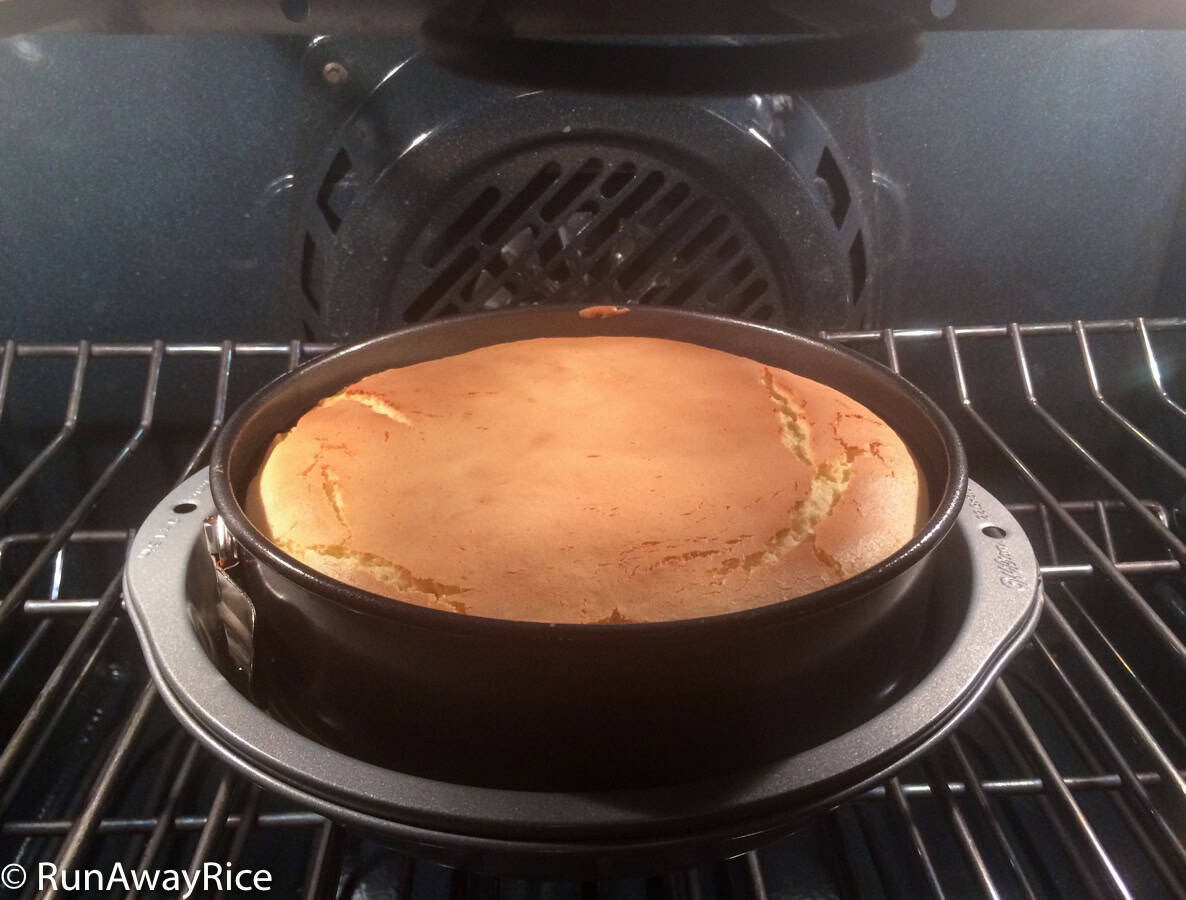 Cracks are another common frustration. They typically happen when the oven is too hot or there’s too much sudden temperature change. The top of the cake sets and expands faster than the rest of the cake, and–crack! It splits. The solution is low and slow baking. I recommend baking at a lower temperature and using an oven thermometer to double-check accuracy and always use a water bath.
Cracks are another common frustration. They typically happen when the oven is too hot or there’s too much sudden temperature change. The top of the cake sets and expands faster than the rest of the cake, and–crack! It splits. The solution is low and slow baking. I recommend baking at a lower temperature and using an oven thermometer to double-check accuracy and always use a water bath.
If your cake has cracks, notice where the cracks are. Is it in the center of the cake or toward the edges of the pan?
On when one of my earlier cotton cheesecake test runs, I wanted to try using a smaller water bath. Well, it turned out, the smaller water bath wasn’t sufficient and the cotton cheesecake did not get a chance to rise slowly and evenly and so it cracked. You can see in the photo above the cake cracked closer to the edge of the pan because it was too hot. The purpose of the water bath is to provide consistent and gentle heat to the cake to allow for even cooking. The take-away here is to make sure to have an ample water bath. The pan for the water bath should be big enough that the cheesecake pan is not touching the sides of the water bath and the water level is about halfway up the sides of your cake pan. Also, remember the water for the bath should be hot to avoid temperature shocks.
If your cake is cracking in the center, it may be too close to your oven’s heating element. If possible, lower the placement of the cake so it’s further away from the heating element or reduce the oven temperature.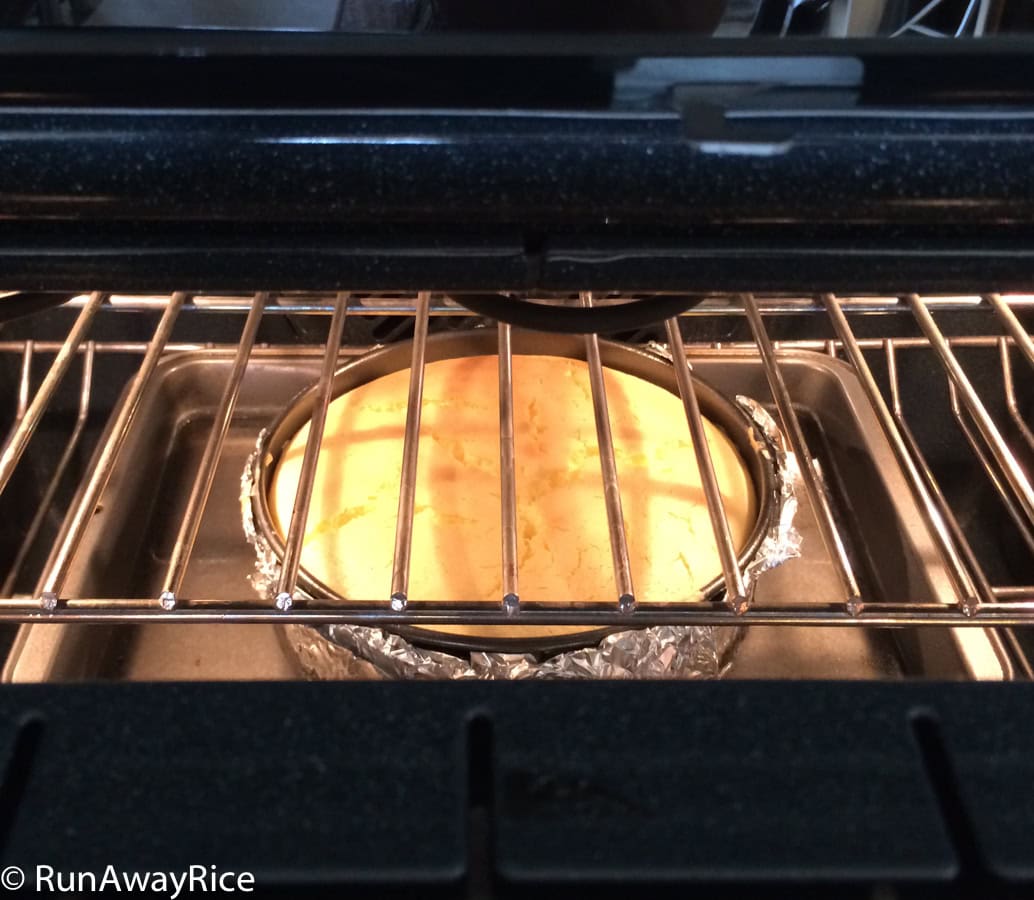
In my oven, I place the cotton cheesecake toward the bottom of the oven since I have a heating element on the top. In my earlier tests, placing the cake too close to the heating element and too high of a temperature caused the top cracks shown in the photo above.
If your cake does crack, don’t stress too much, it will still taste delicious. A dusting of powdered sugar or a dressing of fruit work wonders as a cover-up!
Why is my Cotton Cheesecake soggy after the water bath?
The water bath is essential for even baking, but if water leaks into your cake pan, you’ll end up with a soggy bottom. I’ve had entire many cakes ruined this way. To avoid this, wrap your springform pan tightly in two to three layers of heavy-duty foil before placing it in the water bath. Another trick is to set the cake pan inside a larger pan before adding water to the outer pan. That double barrier ensures no leaks. If you’re nervous about foil, try using a silicone baking pan as the water bath “container” instead.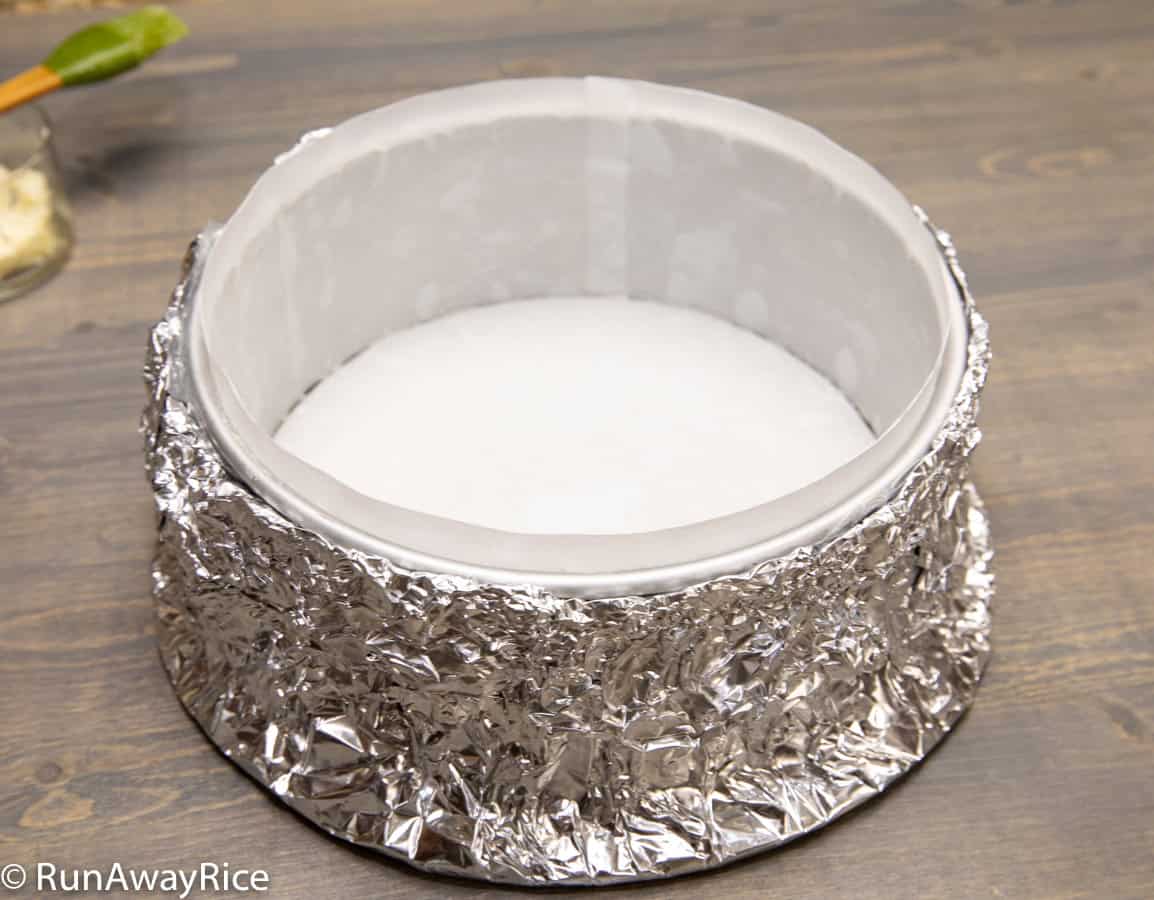
Sometimes the soggy cheesecake is not because you didn’t wrap the springform pan properly, but is caused by the steam trapped inside the foil wetting the cake while it is cooling. If this is the case, remove the cotton cheesecake from the water bath and take off the foil right after the cake is done baking. However, this part is important: do not remove the cake from the oven for this step. You need to do all of this while the cake is still in the oven so there are no sudden changes in temperature which could deflate the cake. So, please be careful as the oven will be hot. Also, it’s best to ask someone to help you to remove the water bath while you support the cake and then remove the foil. Do this quickly and then leave the oven door open slightly and let the cake cool.
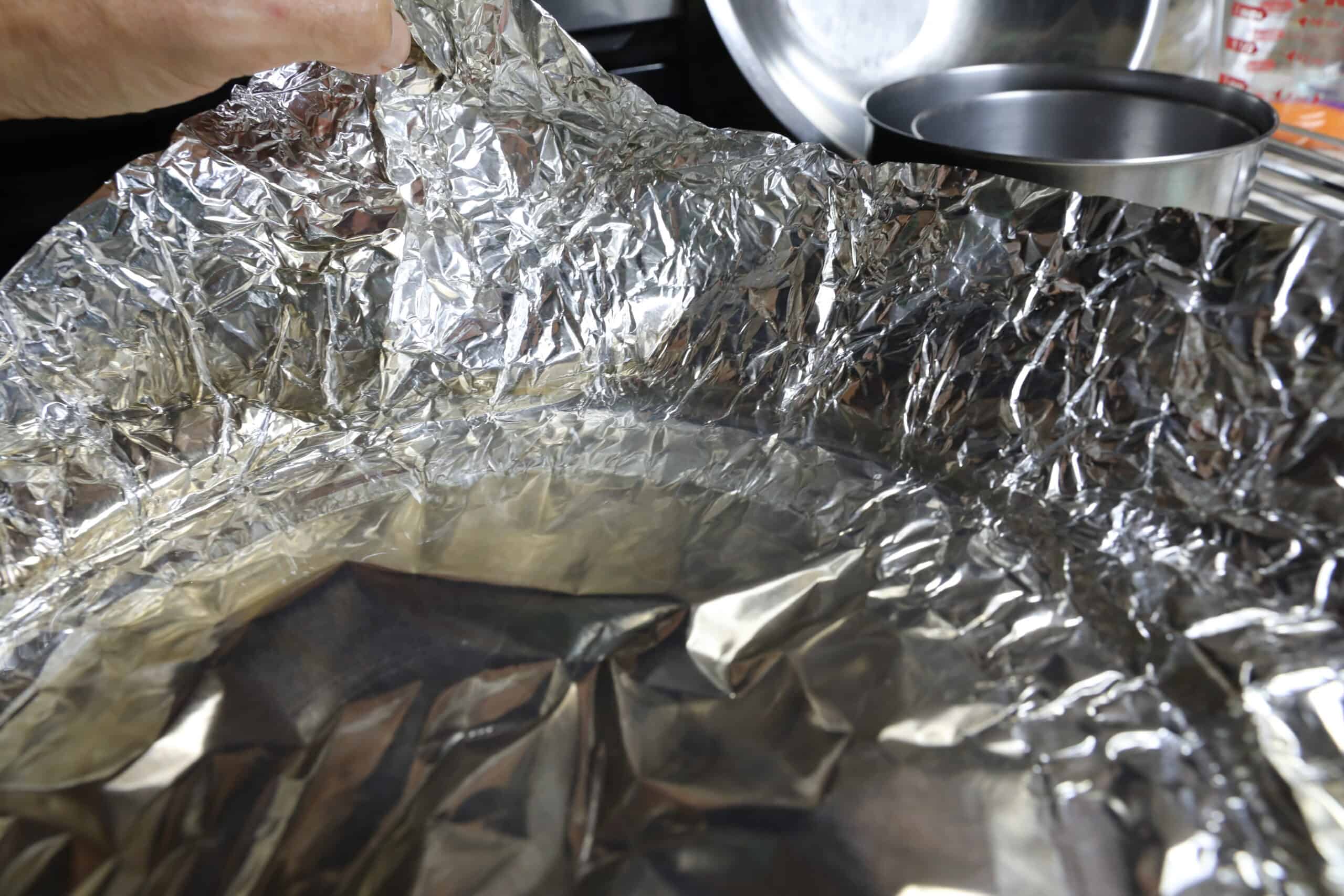
Many readers have asked if they can use just a regular cake pan, without the 8″ springform. The answer is “Yes”. The springform allows the cake to easily be removed but a regular cake pan works and you don’t have to worry about wrapping in foil and soggy bottoms. The challenge with using a regular cake pan is it’s difficult to remove the cake without breaking it. If you decide to use a non-springform pan, make sure to use parchment paper on the pan bottom and side for easy removal. To remove the cotton cheesecake, make sure the cake is completely cooled first, loosen the cake from the edges of the pan using a spatula. Next invert the cake onto a flat surface and then flip it back onto your serving plate.
Other Common Questions
Many readers also ask about cream of tartar. While it helps stabilize egg whites, you can substitute lemon juice or vinegar with good results. Another frequent question is about pan sizes. Yes, you can use a different size, but baking time will vary. A smaller pan will need more time; a wider, shallower pan will need less. Always check for doneness by gently jiggling the cake–it should wobble slightly in the center.
Practice Makes Perfect
Cotton Cheesecake / Japanese Cheesecake is one of those recipes that gets easier every time you make it. The more you bake, the more familiar you’ll become with your oven, your tools, and the batter’s “feel.” Every mistake is a lesson, and I hope sharing my own mishaps helps you avoid the same frustrations.
My Final Encouragement
Don’t be discouraged if your cheesecake doesn’t look like the ones in photos right away. I promise, with the right techniques, you’ll get there. Each attempt will bring you closer to that soft, cloud-like texture this cake is loved for. And when you finally pull a flawless cake out of the oven, it’s one of the most rewarding baking victories. Good Luck!
Chocolate Cotton Cheeseccake / Chocolate Japanese Cheesecake

